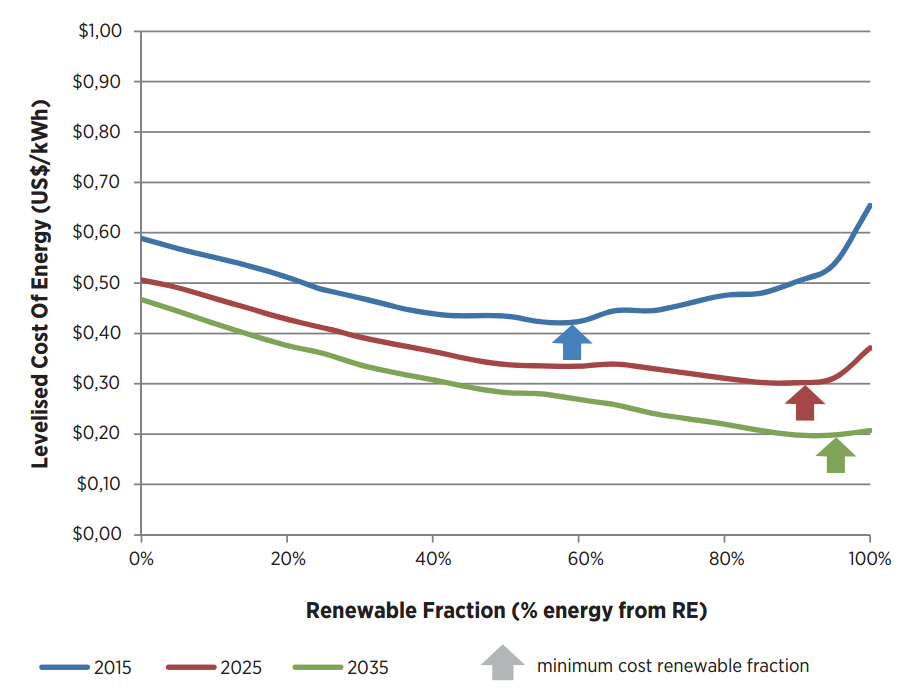The cost of renewable mini-grids and microgrids will continue to decline by 60% in the next two decades as new technologies improve their capability to cost-effectively integrate more energy from renewable sources. This cost reduction is just one finding in a new report from the International Renewable Energy Agency (IRENA). The IRENA report, titled Innovations Outlook: Renewable Mini-grids, evaluates technology innovations and mechanisms for successful implementation of renewable microgrids in the next two decades.
The report, conducted with support from HOMER Energy and Trama TecnoAmbiental (TTA), provides insights gained from interviews with key sector experts, research on patents and literature, and analysis using the HOMER software. Report contributors Mauricio Solano-Peralta and HOMER’s Director of Energy Engineering John Glassmire will discuss key findings from the report at the 4th Annual HOMER International Microgrid Conference, to be held November 7 and 8, 2016 in New York City.
Costs decline as use of renewables in mini-grids grows
An important finding from the report from IRENA is shown in the figure below, which compares the percentage of energy from renewable sources against the expected levelized cost of energy. Each of the lines corresponds to a year: 2015, 2025, or 2035. Each line represents the mini-grid design that minimizes the levelized cost of energy for any given renewable fraction. It shows that there is an optimal amount of renewables to minimize costs. It also shows what the cost will be to attain higher renewable percentages in each of the years. The figure was developed with cost and performance data identified in the report and analyzed in the HOMER Pro software.

Figure from IRENA’s Innovation Outlook: Renewable Mini-grids. In the future, the cost of renewable mini-grids is expected to decline, while at the same time mini-grids are expected to integrate more renewables
This report is a timely one: renewable mini-grids are reaching maturity, as proven by their improved reliability, reduced environmental impact, increased local control, and sustained cost reduction. They light remote communities, enable industry in isolated areas, and provide back-up to the main grid when it fails.
Technical innovations will shape the future
Renewable mini-grids are gaining momentum globally as they bring energy solutions to areas where energy demand is not fulfilled and where grid extension is not a cost-effective alternative. The technologies that enable renewable mini-grids lie at the intersection of engineering, economics, finances, policy, environmental, and social disciplines. The report from IRENA provides prospects on the technological innovations that will shape the future of mini-grids and provides key stakeholders with insight into the technological trends. The report also creates a framework for investors, developers, and policy makers to engage with and support the development and commercialization of mini-grids.
IRENA officially released the report at the 3rd International Off-Grid Renewable Energy Conference and Exhibition (IOREC) in Nairobi, Kenya September 30-October 1, 2016. A free download of the full report and synopses of the report may be found on IRENA’s website.
